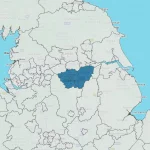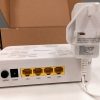Scientists Use Fibre Optic Broadband Cables to Detect Earthquakes
Underground optical fibre networks aren’t just brilliant at delivering ultrafast broadband ISP speeds to UK homes. A team of German scientists have found that they can also be used to detect Earthquakes, as well as other seismic signals from hammer shots, passing cars or wave movements in the ocean.
Fibre optic infrastructure, such as the Fibre-to-the-Premises (FTTP/H) networks that are so often talked about on these pages, typically transmit their data using laser light. Researchers from the GFZ German Research Centre for Geosciences have now demonstrated, on a 15km long cable in Iceland, that the same infrastructure can also be used as a seismological network to detect underground structures in “unprecedented resolution.”
Admittedly using fibre optic cables as detection tools is not strictly speaking a new approach and they’ve been adopted for years in boreholes for reservoir monitoring, but specifically using them for measurements along the surface of the ground for seismological objectives is somewhat of a first. The theory itself has been around for a few years but the German team appear to be the first to actually demonstrate it.
Advertisement
The cable itself was first deployed in 1994 on the Reykjanes peninsula, which crosses a well-known geological fault zone in the rift between Eurasian and American tectonic plates. Philippe’s team used this to send their light signal, which was then analyzed and compared to data sets from a dense network of normal seismographs.
Philippe Jousset, GFZ, said:
“Our measurements revealed structural features in the underground with unprecedented resolution and yielded signals equaling data points every four meters. This is denser than any seismological network worldwide.”
Understandably the method is considered to be a “game changer for seismology.” The fact that such FTTP/H networks are rapidly growing in global coverage means that seismologists could potentially have access to a vast amount of new data sources, which in the above test was able to detect known faults and volcanic dykes, as well as previously unknown faults.
Furthermore the team were even able to measure subsurface deformation taking place over a period of several minutes. Small local earthquakes, waves originating from large distant quakes, and microseism of the ocean floor were similarly recorded via the fibre optic cable. Chalk this one up under fascinating scientific insight of the day!
Apparently the researchers only needed one single strand of fibre in order to make it work, which is handy since turning every core fibre into a seismological tool might not make telecoms operators too happy due to the potential for lost capacity (even unlit Dark Fibre carries a cost). On the other hand in many areas it could be a lot cheaper to rent a strand of fibre than to manually build a dense new network of seismographs.
Advertisement
Future studies are now being planned to investigate whether deep-sea cables can also be used for seismic measurements. We could be on the verge of something very special, particularly if it helps to improve predictions for future earthquakes. Just one extra reason to be building fibre. The research paper is here.
Mark is a professional technology writer, IT consultant and computer engineer from Dorset (England), he also founded ISPreview in 1999 and enjoys analysing the latest telecoms and broadband developments. Find me on X (Twitter), Mastodon, Facebook, BlueSky, Threads.net and Linkedin.
« BDUK Dispute Leaves Cumbria Villages Waiting for Faster Broadband

















































Comments are closed